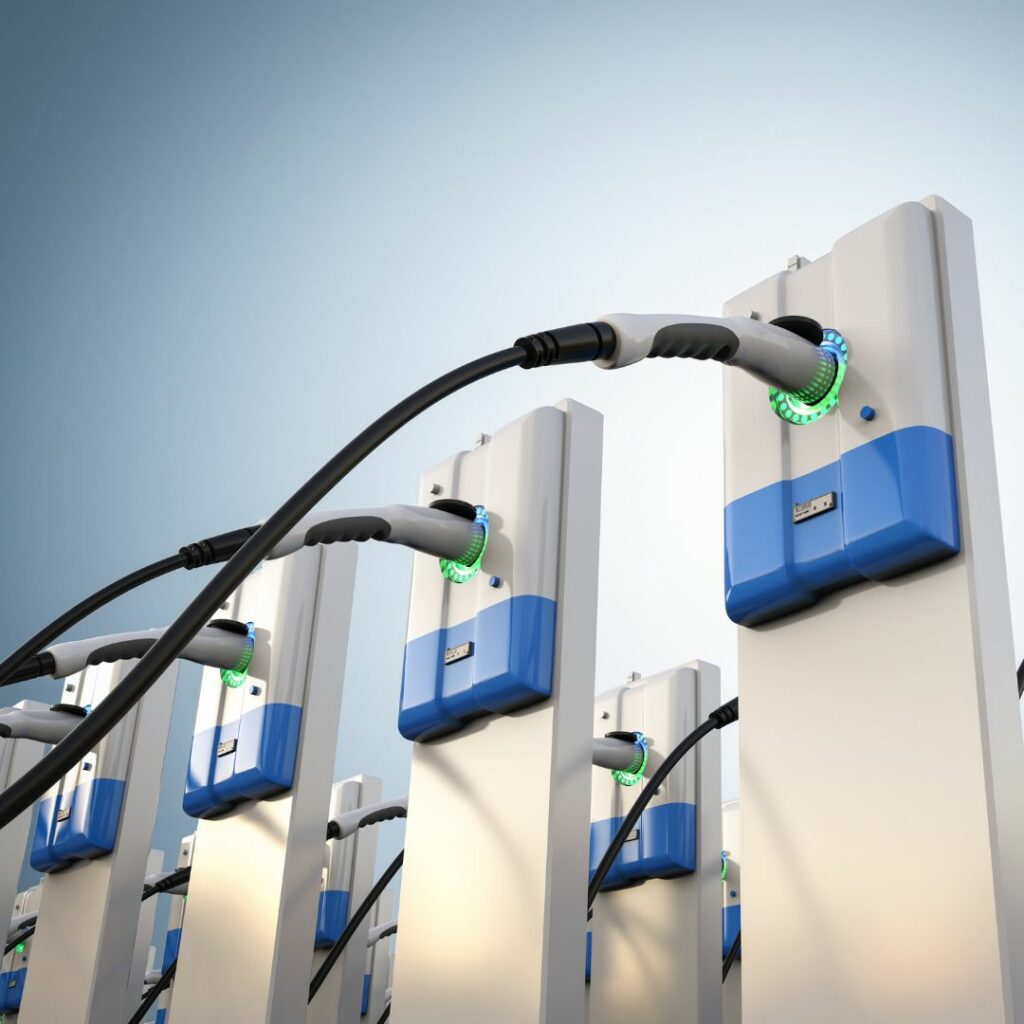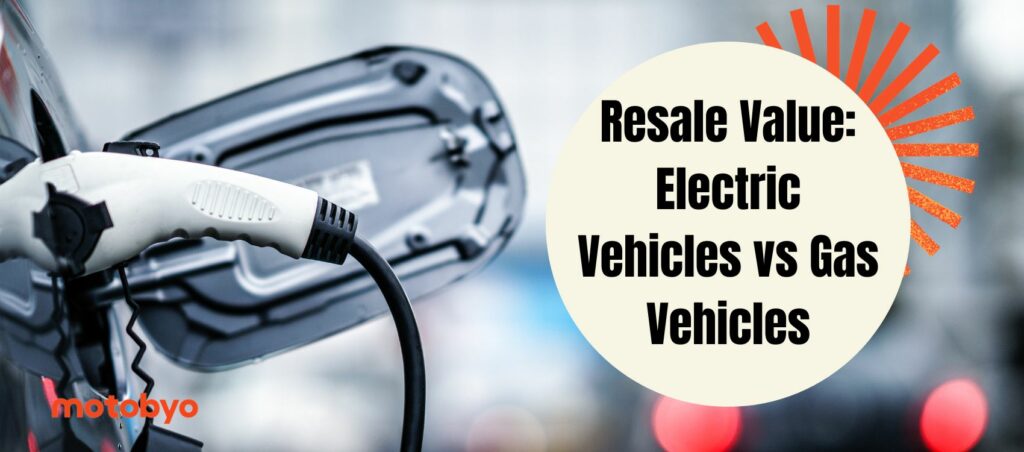Owning an electric vehicle (EV) comes with many benefits, including a reduced cost to maintain and lower cost to change vs. refueling a gas powered vehicle. Unfortunately, resale value is not one of those benefits, especially when compared to your traditional gas-powered vehicles.
Of course, that doesn’t mean that EVs may not eventually amass a comparable resale value to their gas-powered counterparts. For now, though, it’s important for car buyers and sellers alike to understand what factors into the resale value of these vehicles to help make better purchase decisions.
In this article, we’ll explain the EV vs gas resale value phenomenon so you can get a better understanding of the reasoning behind the EVs poor depreciation.
Keep reading to learn more.
EV vs gas vehicle depreciation rate
EVs depreciate just like their internal combustion engine (ICE) alternatives. However, the two do not depreciate at the same rate.
According to an iSeeCars study, EV owners can expect to see an average of 52% depreciation within the first three years. ICE vehicles vary in this regard, with sedans on average depreciating by 39.1%, SUVs by 39.7%, and trucks by 34.3% in that same timeframe. What’s more, there are a lot of ICE vehicles that will hold up to 85% of their value during that time and retain much of their value for up to seven years.
But why?
Let’s break it down:

EVs and depreciation
Why don’t electric cars hold their value well? While the daily cost-benefit of charging an EV vs. refueling a gas powered vehicle may be enough to make car owners consider switching over to the other side, there are still a lot of inconsistencies and concerns regarding EV ownership.
Here are a few key points that contribute to a less-than-desirable EV car resale value:
- Range anxiety: The most common reason why EVs are less popular is that there are fewer charging stations than gas stations. What happens when you can’t find a charging station and your car runs out of power? EVs have an average range of 217 miles, which is problematic on road trips or daily driving if you don’t have enough time to charge up in between work and errands.
- Affordability: EVs are more expensive than ICE vehicles. While there are incentives and free government hands-outs that may mitigate some of the costs over time, it’s not just the original window sticker price that’s a cause for concern. Replacement batteries are incredibly expensive, costing upwards of $15,000 or more. What’s more, EV battery technology is evolving rapidly, which means older EV models and their batteries are quickly becoming outdated, requiring a new battery every 8 to 10 years. By the time an EV turns 8 years old and needs a new battery, the value of the battery will likely be more than the value of the vehicle and these EVs will end up being scrapped.
- Charging time and costs: There are different levels of charging stations for EVs, and they range in power. This means it can take as little as 5 hours to charge your EV or as much as 50 hours. While it’s not expensive to charge your EV, you’ll have to decide whether you want to continuously visit a local charging station or shell out money to have one installed in your home — which undoubtedly would affect your energy bill.
- Performance: In terms of raw power, EVs are able to achieve the same horsepower rating as their ICE counterparts thanks to having fewer internal moving parts and instantly available torque. However, most EVs are designed to run on a single-speed gear which means there’s a considerable compromise between top speed and acceleration.
- Environmental Impact: While electric vehicles do not burn fuel and cause harm to the environment themselves while in operation, the process of manufacturing an electric vehicle causes more environmental damage than producing an ICE vehicle. Some of the areas for concern are the strip mining of the Earth to retrieve minerals that produce batteries, the lithium leaching fields in West Africa where waste lithium is soaked back into the Earth and of course the fact that the electricity needed to charge these vehicles mainly comes from coal burning electric plants. None of that sounds appealing.
Put simply, the above considerations are what keep EVs from being in high demand — which is arguably the most important factor in determining a vehicle’s depreciation rate.
ICEs and depreciation
When it comes to traditional gas-powered engines, depreciation is much more straightforward. It’s also much easier to prevent, to a certain extent. ICE vehicles depreciate due to the following factors:

- Make and model: The less popular the make and model of the vehicle, the quicker it’ll lose its value.
- Condition: A vehicle with a lot of wear and tear or that has been involved in an accident will have a lower resale value compared to a make and model of the same year that has normal wear and tear and a clean history.
- Age: For most vehicles, the older they are, the more they depreciate. The exceptions are popular generational vehicles (such as the Jeep Wrangler), certain luxury vehicles, and the classics.
- Mileage: Most vehicles have an acceptable upper limit on the amount of mileage they are known to accumulate over time without requiring major repairs. On average, it’s acceptable to put up to 12,000 miles per year on a vehicle. The more miles on a vehicle, the more it’ll depreciate — especially if the mileage is too high for the vehicle’s age.
There are other factors that come into play for ICE vehicle depreciation. However, a popular make and model that is kept in good condition will also retain much of its value compared to less popular ICE vehicles and EVs.
It’s difficult to say whether gas cars will begin to depreciate at a faster rate if more people switch over to EVs. The marketing for EVs is still relatively new and there are a lot of inconsistencies that need to be addressed before EVs increase in demand.
Do any EVs hold value?
If you’re thinking about becoming an EV owner but want the flexibility of resale value, there’s still plenty of hope.
Currently, Teslas hold onto the value more than other EVs. According to iSeeCars, Tesla’s entry-level Model 3 only depreciates by 10.2% per year once it hits the three-year mark. However, not all Tesla models are created equally as the company’s flagship sedan Model S is known to depreciate much faster.
What About Hybrid Cars?
On average, hybrid cars depreciate by between 15% and 25% per year during the first five years of ownership. Not too long ago, however, hybrid cars would lose more than half their value almost immediately.
One reason depreciation for hybrid cars has slowed down has a lot to do with advancing technology contributing to much higher MPGs for most hybrid make and models without the buyers having to fully commit to an EV.
Because of this, hybrids became increasingly popular which also allowed them to become more affordable from the get-go compared to when they first entered the market. Of course, a hybrid car’s resale value will depend entirely on its make and model, year, mileage, and MPG.
Whether you’re looking to sell your EV, hybrid, or ICE vehicle or buy a used one, Motobyo can help you achieve a fair market price and make the entire process quick and easy. Learn how Motobyo works today!



